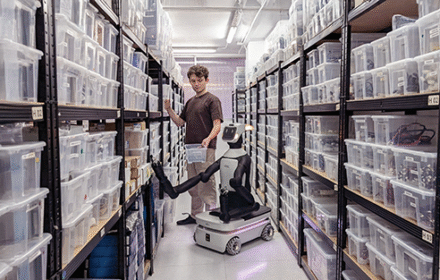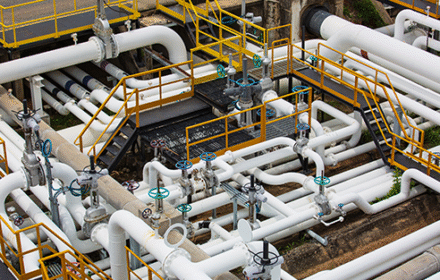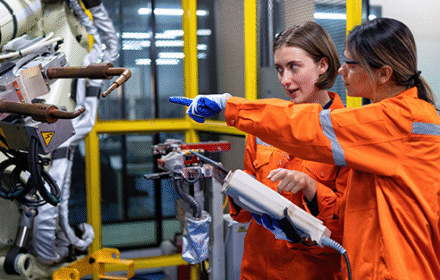
Micro Data Centers Revolutionize Smart Manufacturing and Industrial Automation
Modern automotive manufacturers face unprecedented data challenges. Production lines now generate up to 5 petabytes weekly. Micro data centers provide critical edge computing solutions for this data deluge.
The Data Explosion in Modern Manufacturing
Today’s automotive factories operate as sophisticated data centers. Robotics and machine vision systems generate massive information volumes. According to Statista, manufacturers will install over 150 million IoT devices by 2028.
This data intensity creates new operational requirements. Milliseconds of latency can determine production success. Traditional cloud computing cannot meet these real-time demands effectively.
Micro Data Centers Address Critical Pain Points
Manufacturers require solutions for multiple operational challenges. Latency reduction remains the primary concern. Security and bandwidth limitations also drive edge adoption.
Key manufacturing pain points include:
- ✅ Ultra-low latency requirements for robotics
- ✅ Data privacy and security concerns
- ✅ Bandwidth limitations for real-time processing
- ✅ Need for operational autonomy
Factory Floor Computing Advantages
Traditional data centers located miles away create unacceptable delays. Micro data centers solve this proximity problem. They integrate computing resources directly into production environments.
These compact systems combine multiple functionalities:
- ⚙️ Computing and storage capabilities
- ⚙️ Networking infrastructure
- ⚙️ Integrated cooling systems
- ⚙️ Power management features
Design Benefits for Industrial Environments
Micro data centers address specific manufacturing constraints. Space limitations require compact footprints. Uptime demands necessitate built-in redundancy.
Key design advantages include:
- 🔧 Space-efficient wall-mounted options
- 🔧 Environmental monitoring systems
- 🔧 Physical and cyber security features
- 🔧 Modular scalability for future expansion
IT/OT Convergence Enables Digital Transformation
Information technology and operational technology traditionally operated separately. Modern smart manufacturing requires seamless integration. Micro data centers bridge this critical gap.
Successful convergence delivers significant benefits. Real-time data analysis improves decision making. System-wide visibility enhances operational efficiency. Security integration protects both business and production systems.
Industry Implementation Case Studies
Multiple industries demonstrate micro data center effectiveness. A packaging company achieved full operational status within 60 days. They reported improved energy efficiency and reduced waste.
A global pharmaceutical company standardized deployments across multiple sites. This approach reduced labor costs and installation errors. Regulatory compliance maintenance became more straightforward.
Electric Vehicle Manufacturing Applications
The electric vehicle revolution accelerates micro data center adoption. Thirty-four new EV battery factories are planned for the United States. These facilities require advanced computing capabilities.
Automated guided vehicles and autonomous testing tracks depend on edge computing. Private 5G networks integrate with micro data centers. This combination supports always-on manufacturing operations.
Economic Pressures Drive Efficiency Investments
Manufacturing profitability faces significant challenges. Mercedes-Benz experienced 50% profit margin declines. These pressures accelerate efficiency technology adoption.
Micro data centers enable predictive maintenance optimization. Supply chain visibility improves substantially. Sustainability goals become more achievable through better monitoring.
Technical Analysis from World of PLC
Micro data centers represent the natural evolution of industrial automation. They extend traditional PLC and DCS capabilities. Modern control systems require localized computing power.
According to World of PLC analysis, successful implementation requires:
- ✅ Careful network architecture planning
- ✅ Cybersecurity protocol integration
- ✅ Environmental condition assessment
- ✅ Scalability requirement evaluation
Manufacturers should consider both current and future needs. The right infrastructure supports digital twin implementation. AI-based monitoring becomes feasible with proper edge computing.
Future Manufacturing Infrastructure Requirements
Next-generation manufacturing demands unprecedented flexibility. Personalized production requires adaptable computing resources. Micro data centers provide this essential capability.
Investment timing proves crucial for competitive advantage. Early adopters gain significant operational benefits. They position themselves for future technology integration.
For comprehensive industrial automation guidance, explore World of PLC’s technical resource library. Our experts provide practical implementation strategies.
Frequently Asked Questions
How do micro data centers differ from traditional servers?
They integrate computing, storage, networking and cooling in compact, industrial-rated enclosures designed for factory environments.
What latency improvements can manufacturers expect?
Micro data centers typically reduce latency from hundreds of milliseconds to single digits, enabling real-time control of automated systems.
Are micro data centers suitable for small manufacturers?
Yes, modular designs allow scalable implementation matching both budget constraints and operational requirements.
This technical analysis was provided by PLCDCSHUB with expertise in industrial automation systems. Implementation recommendations based on industry best practices.







